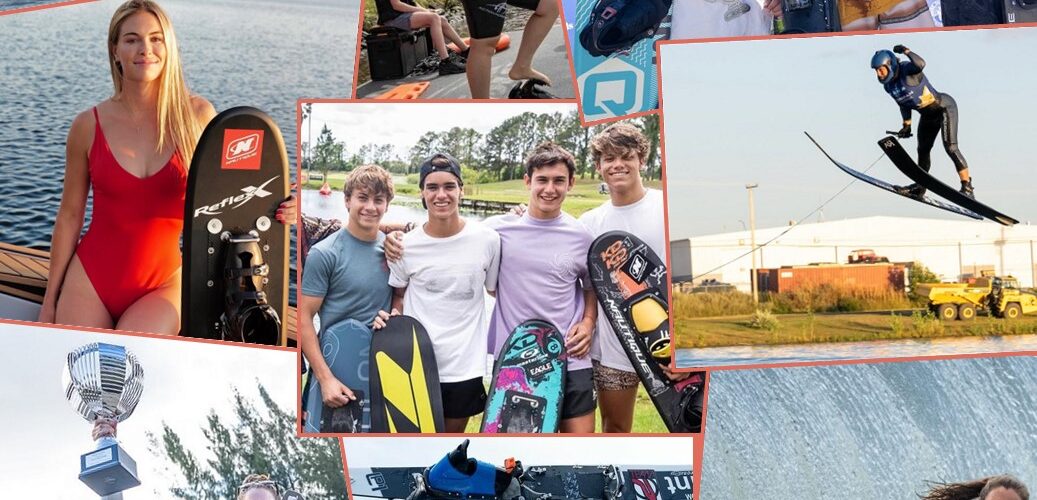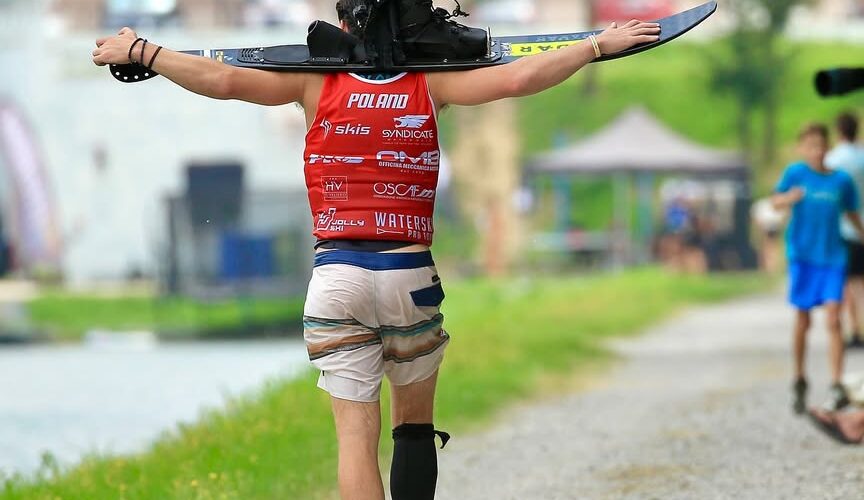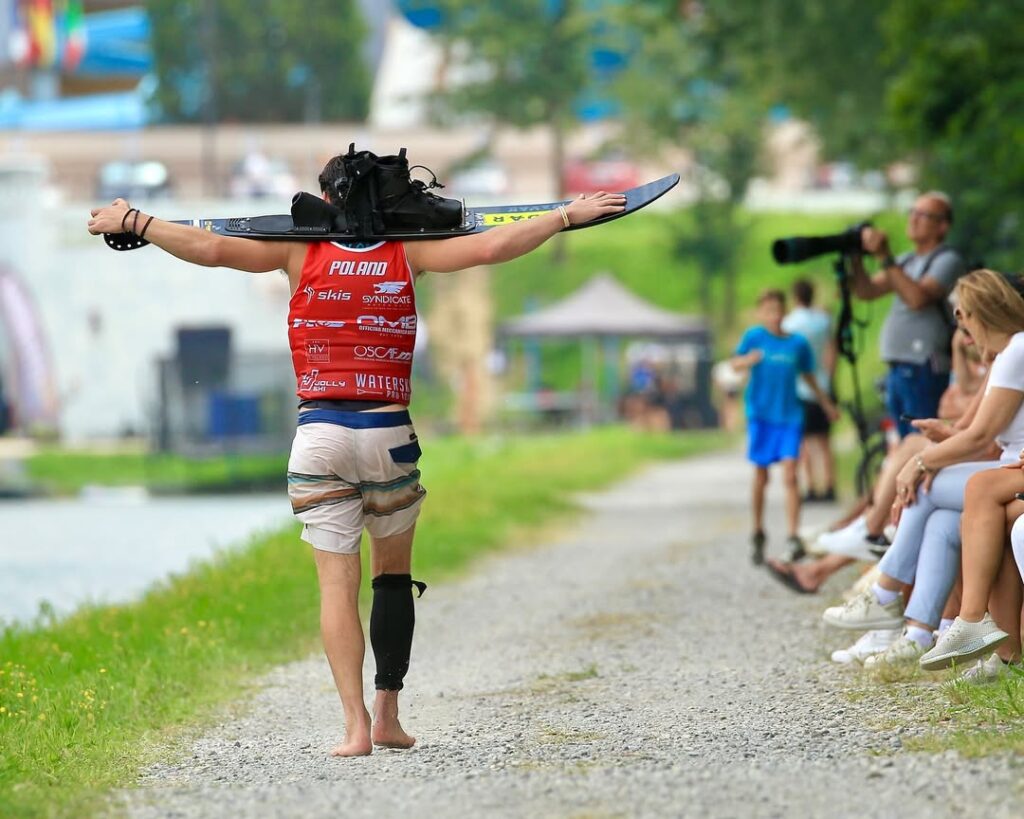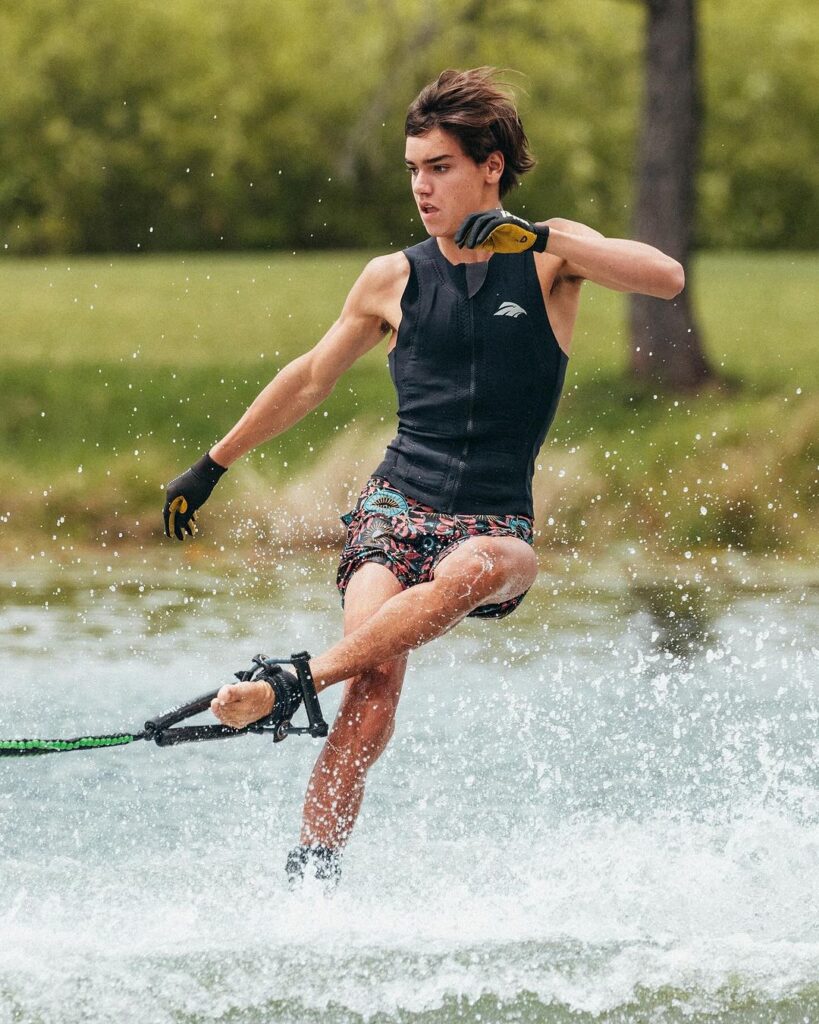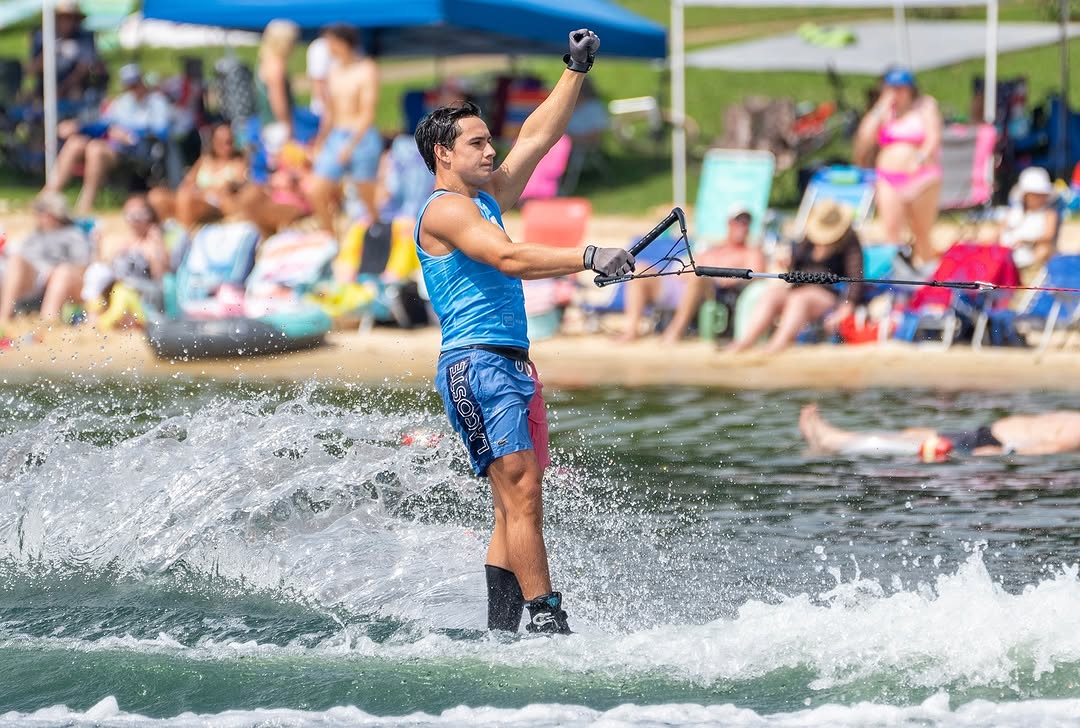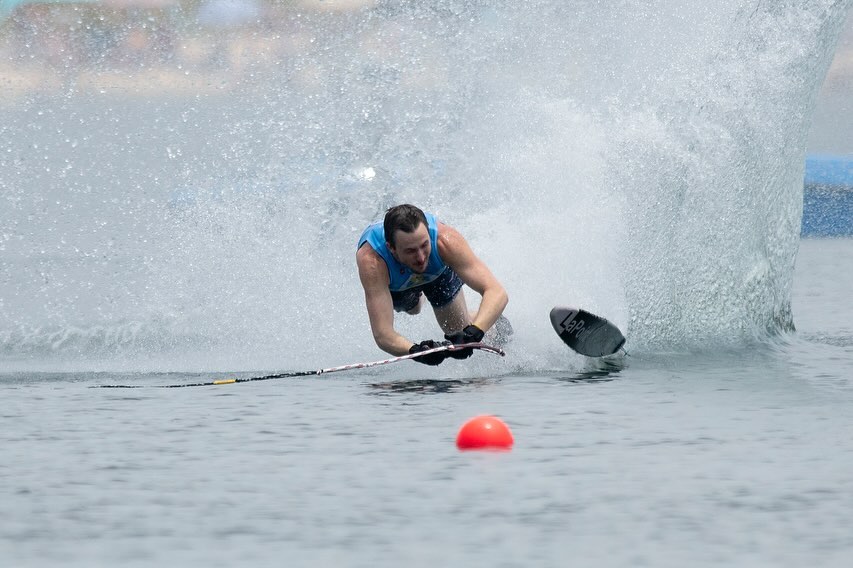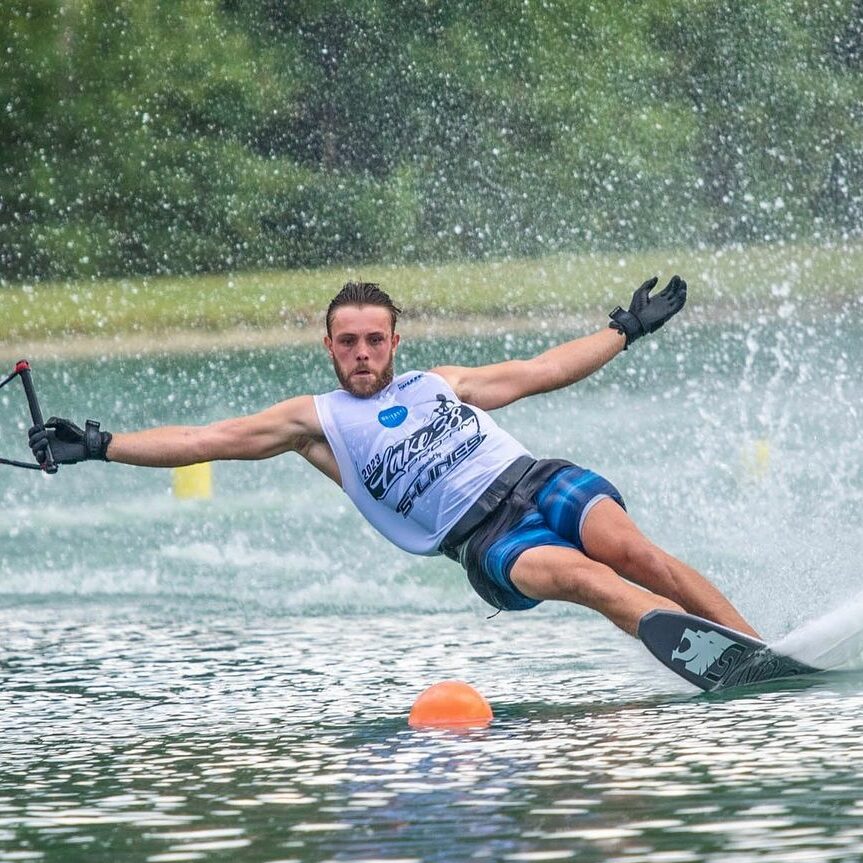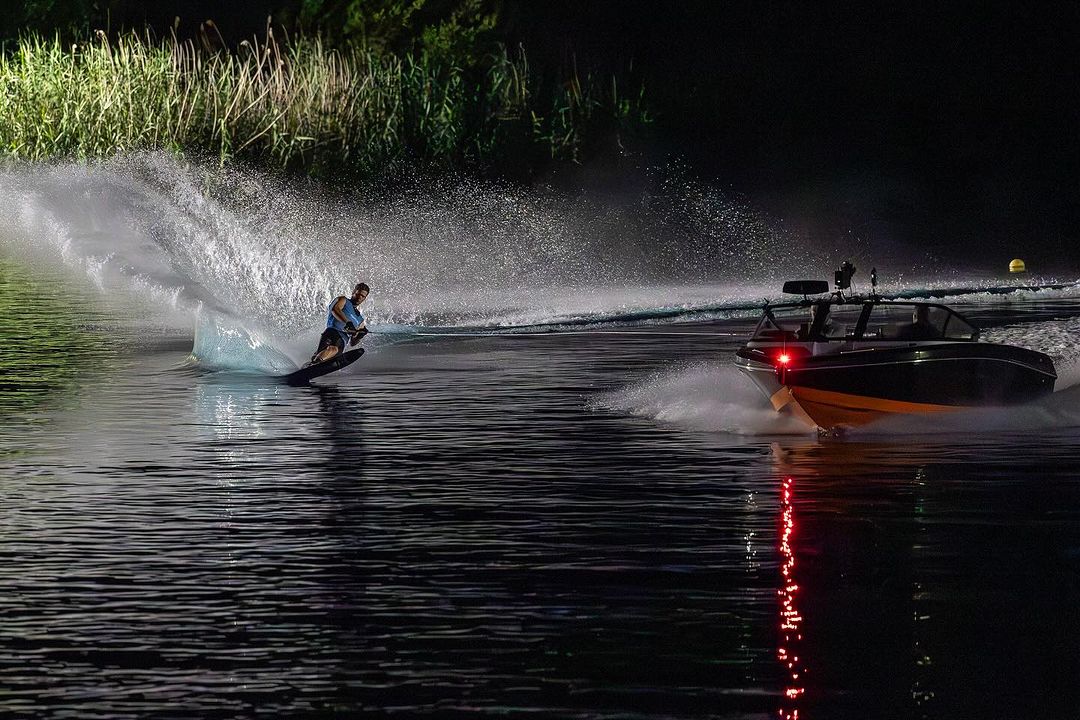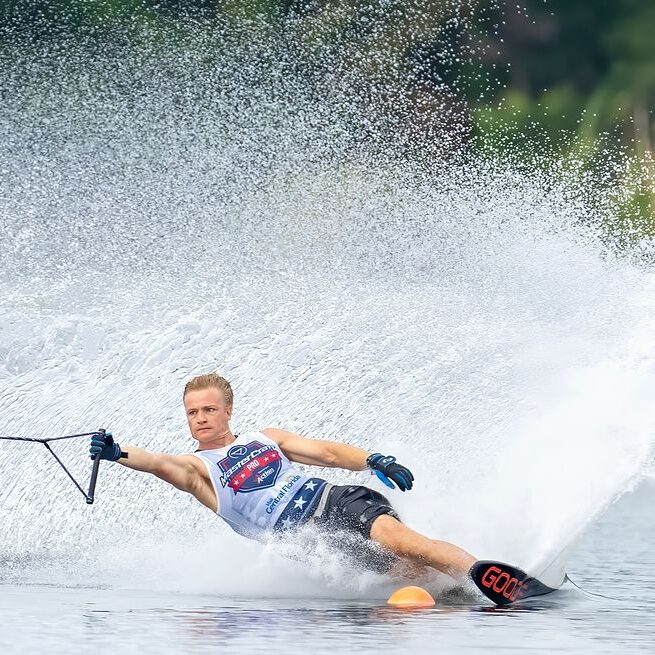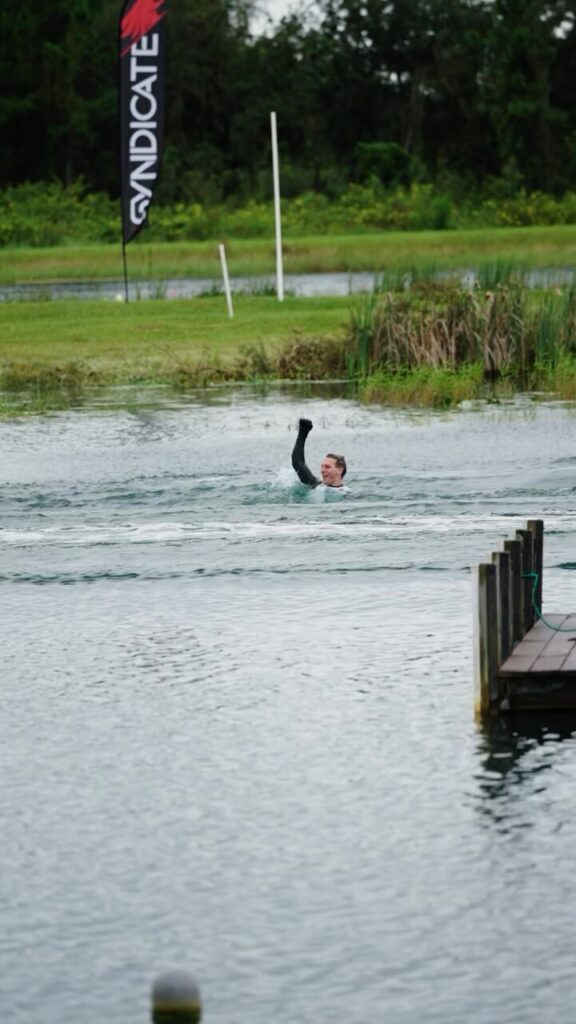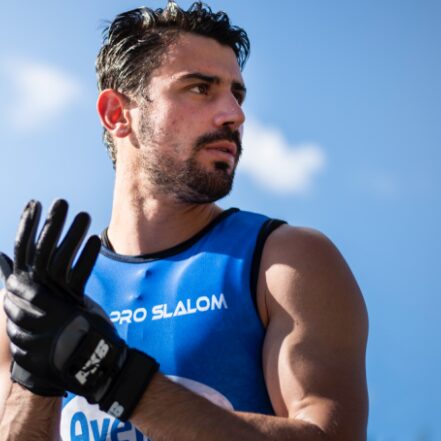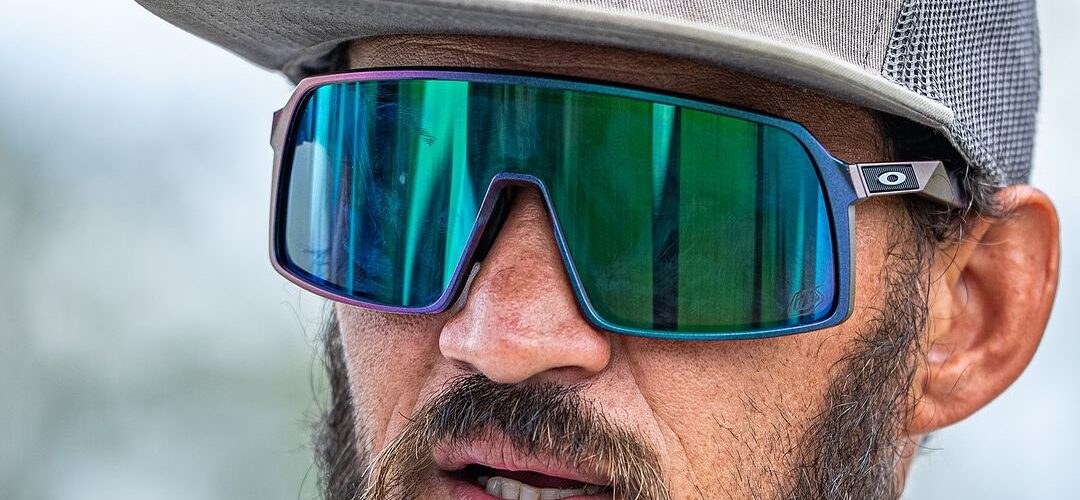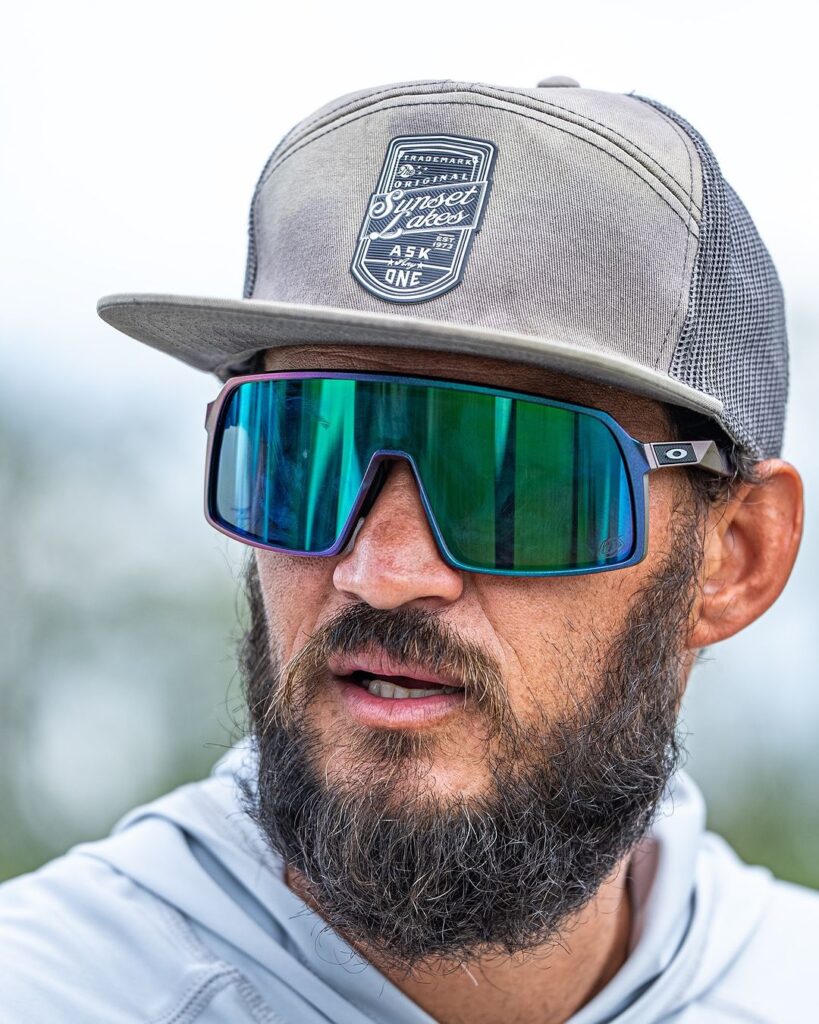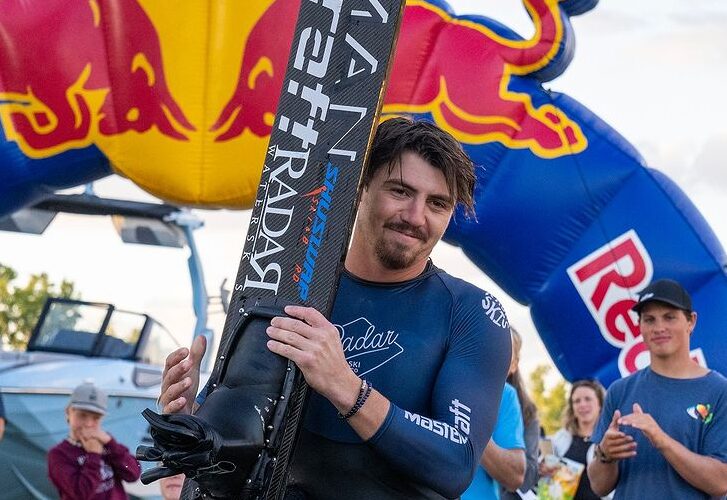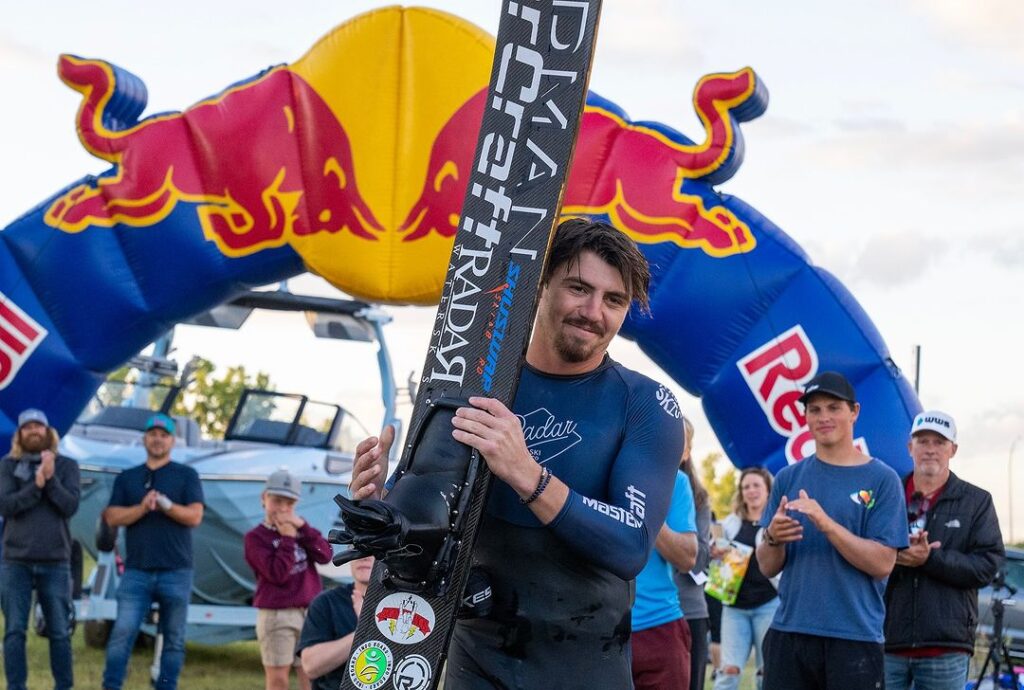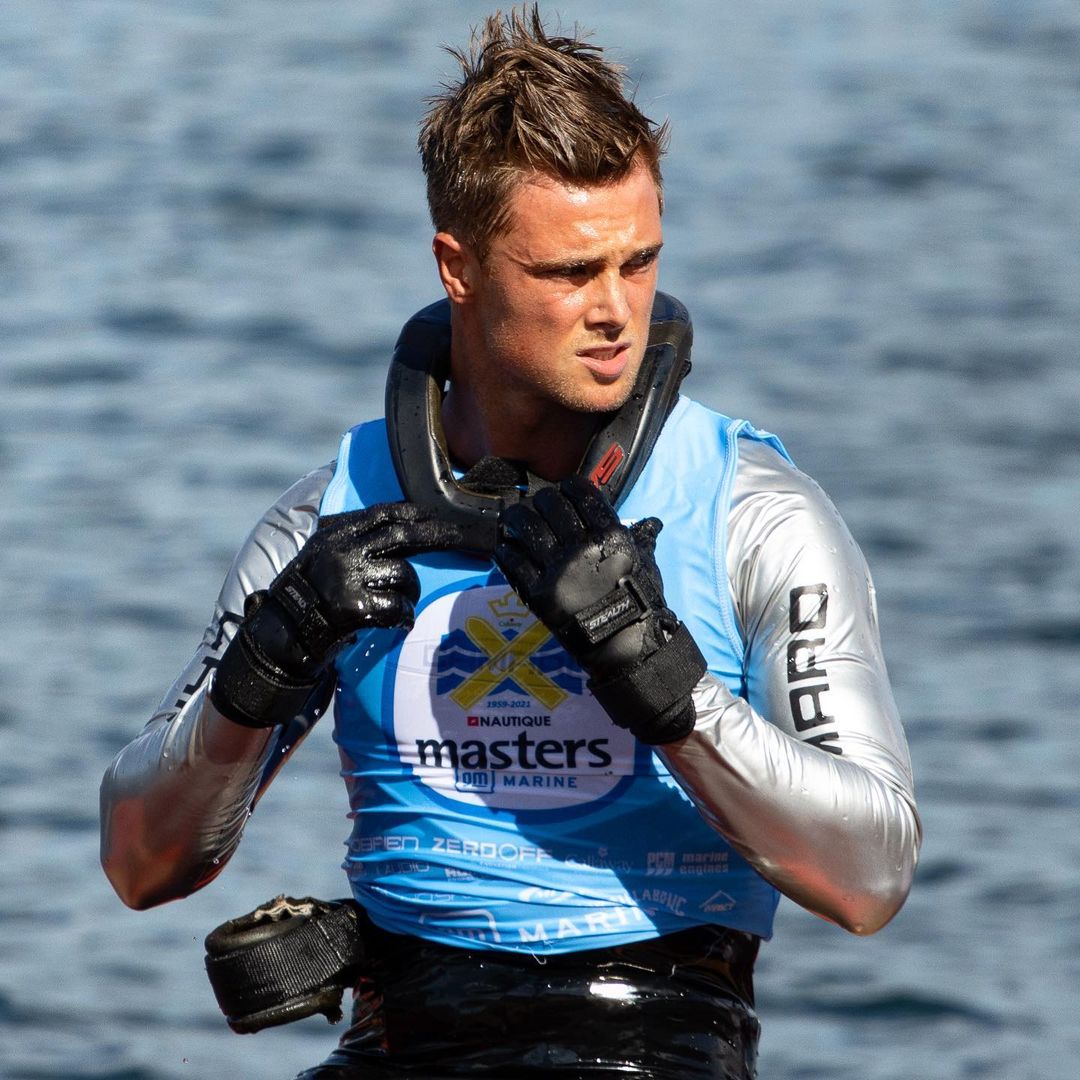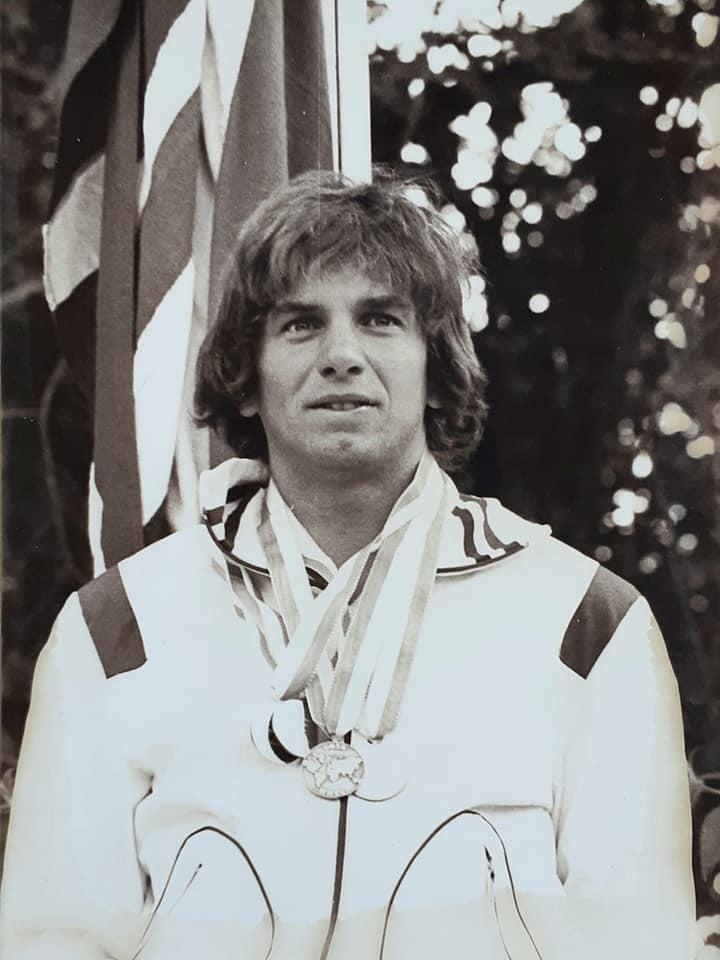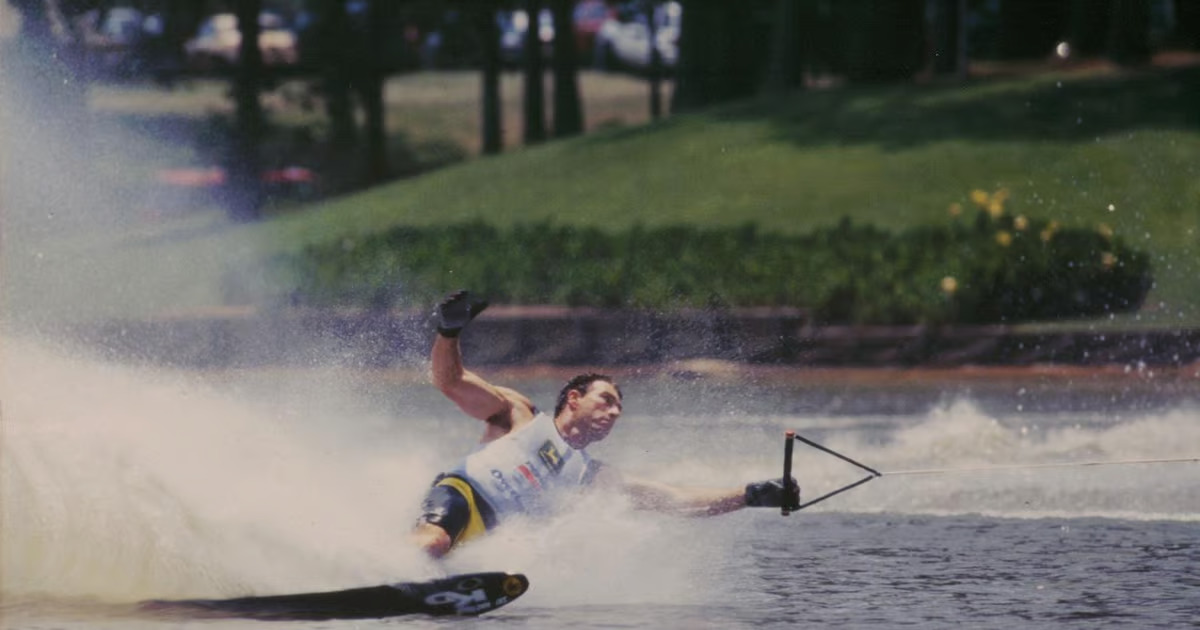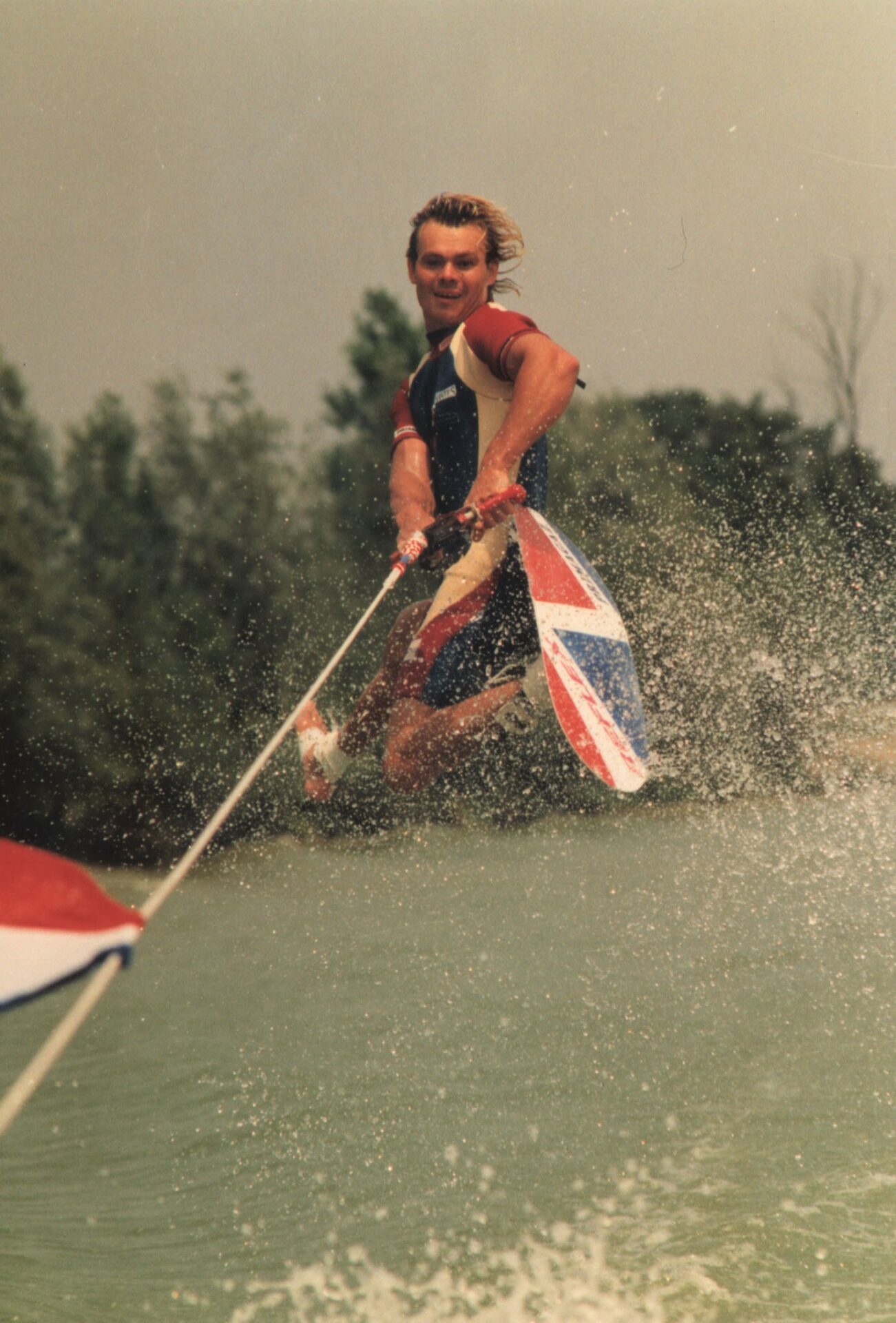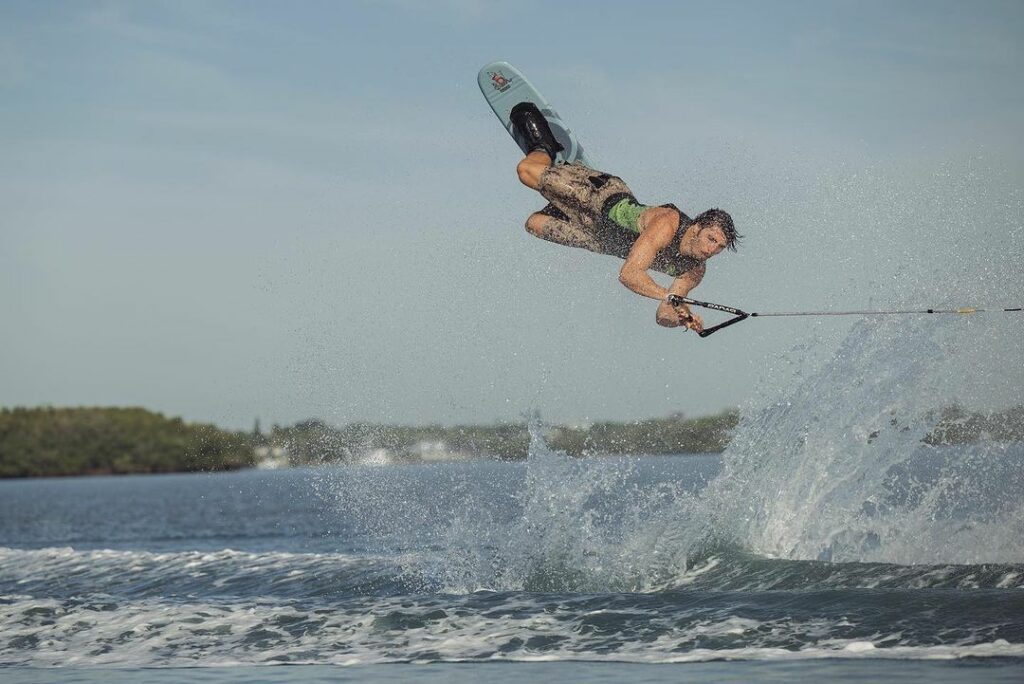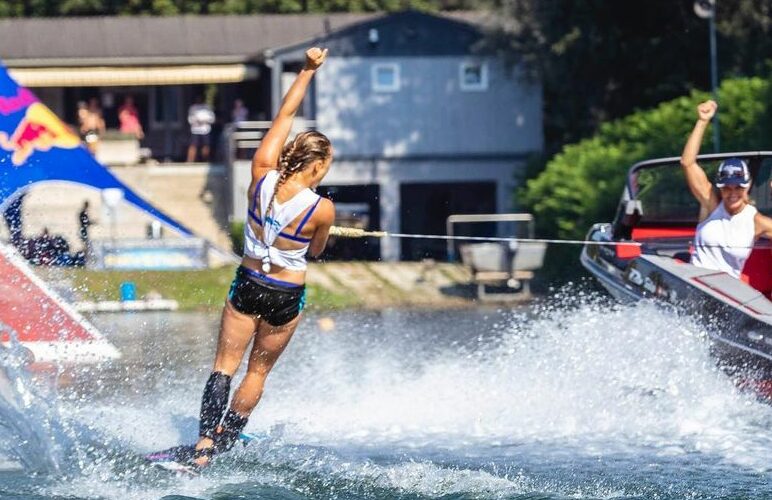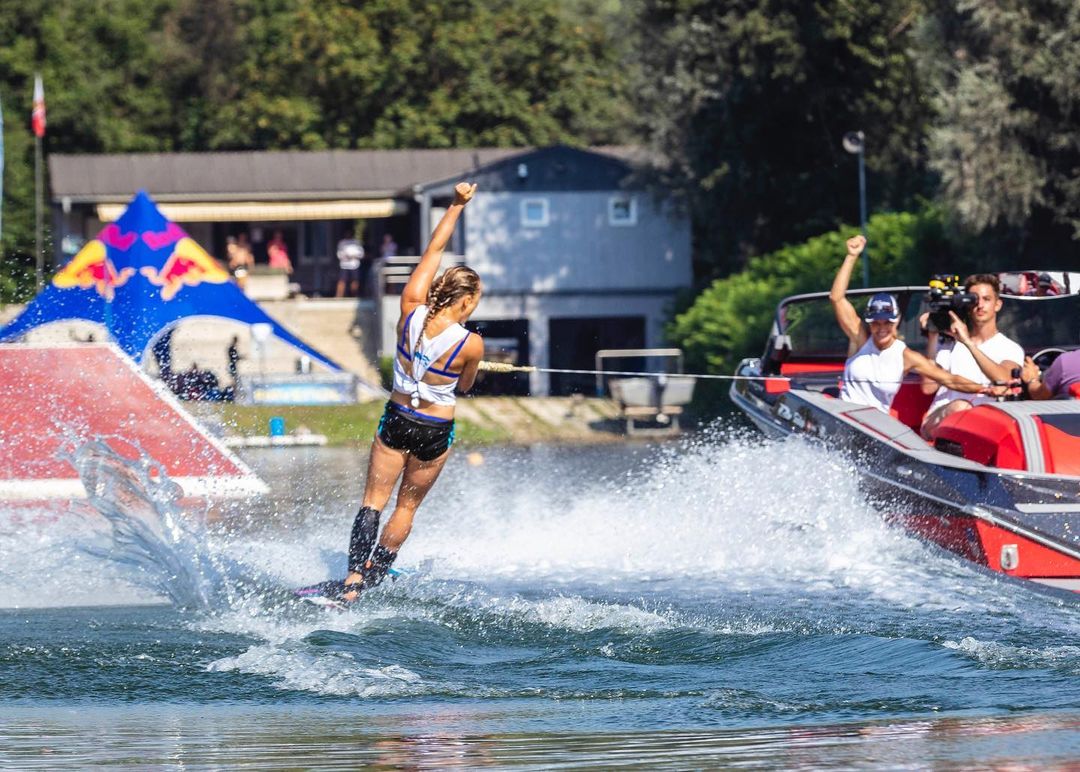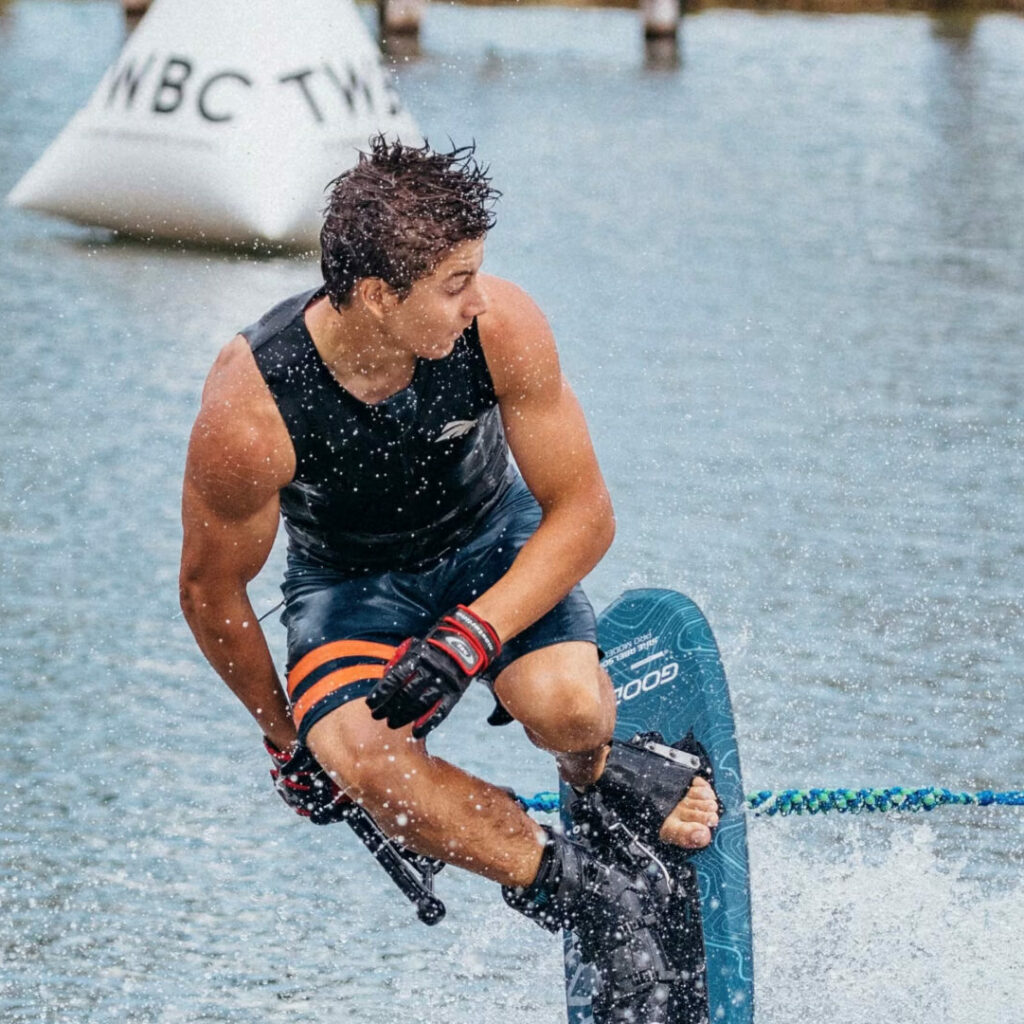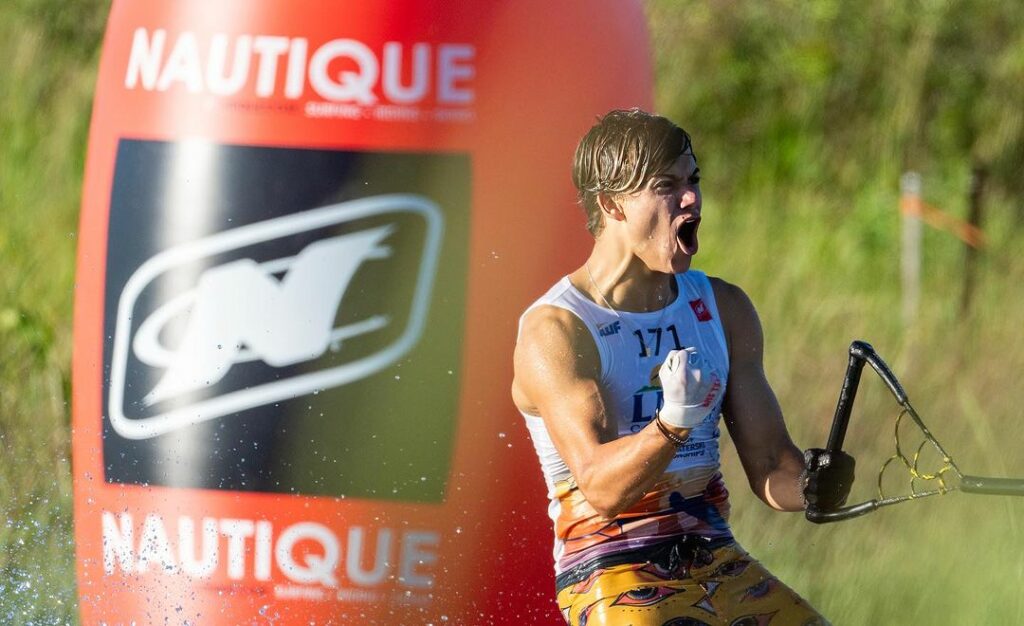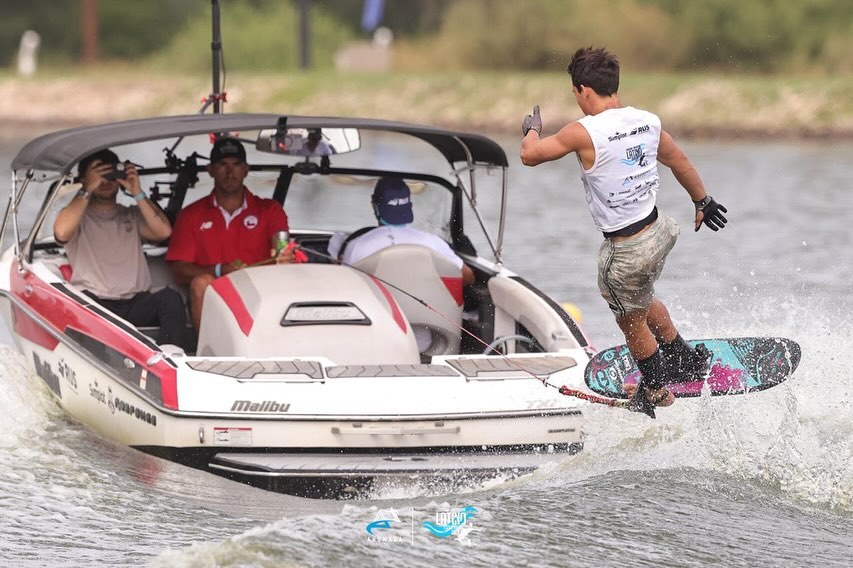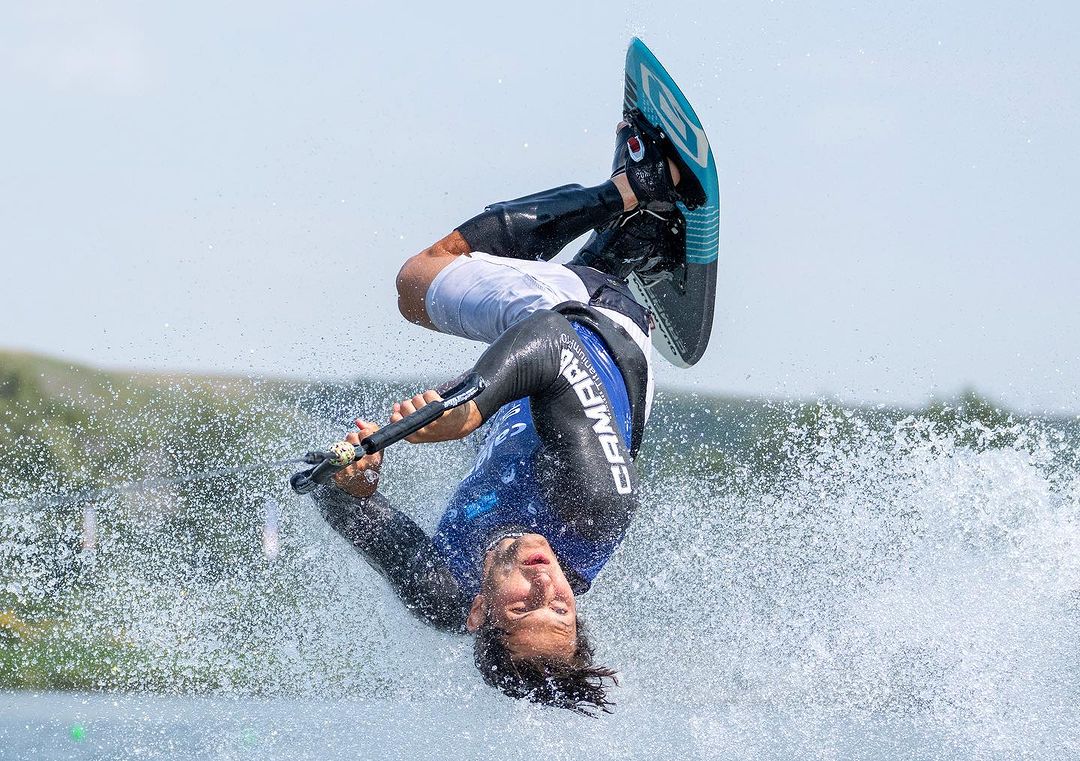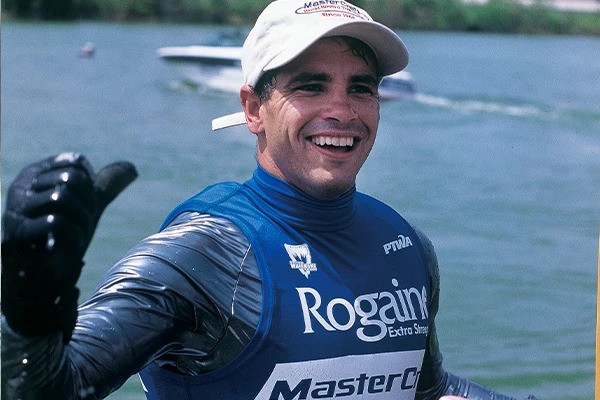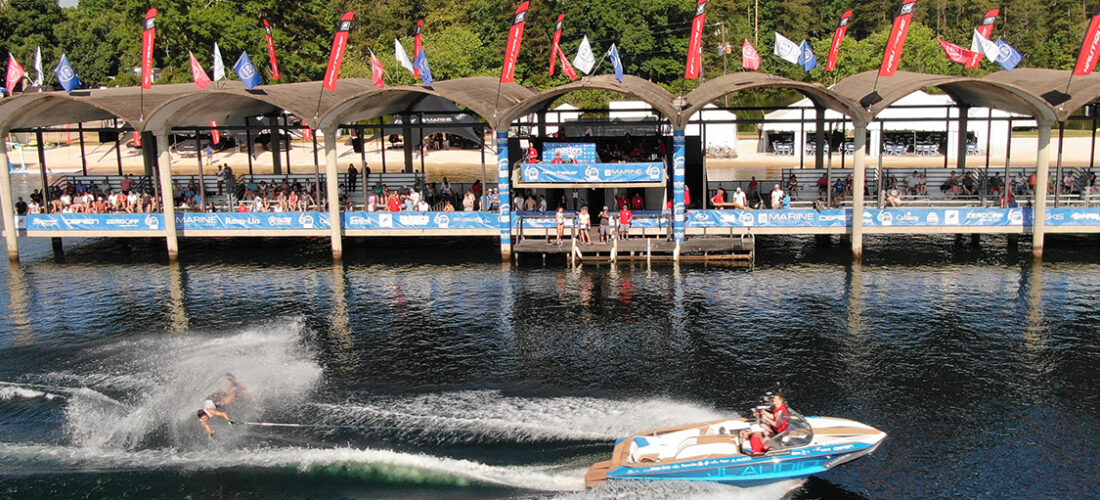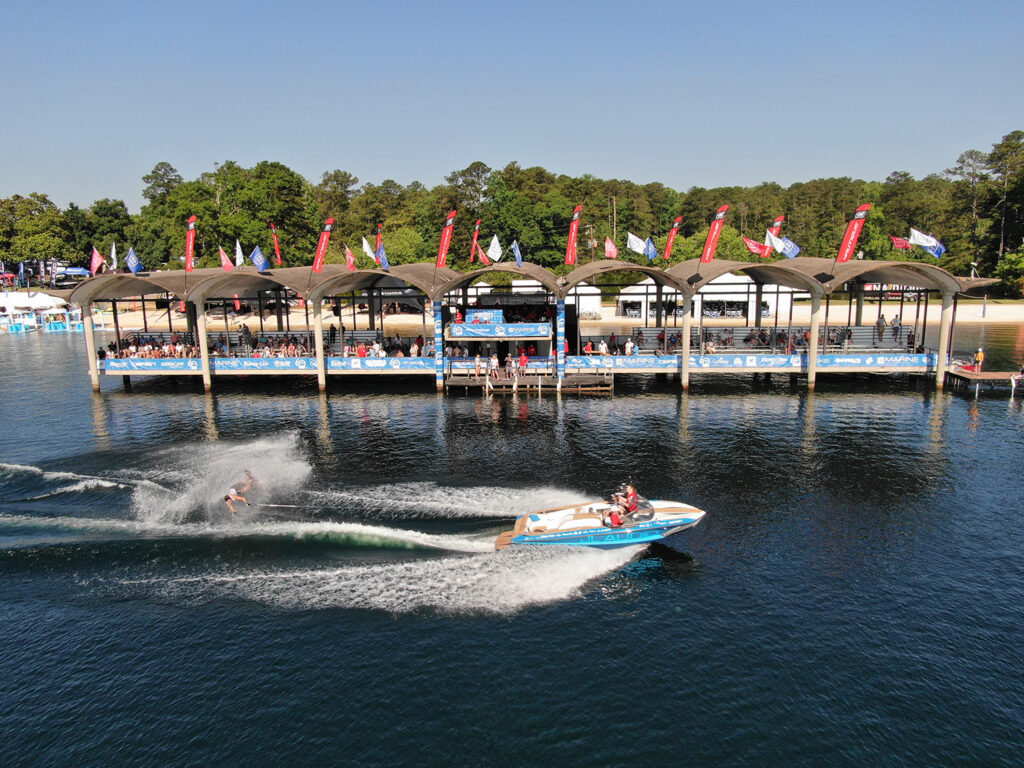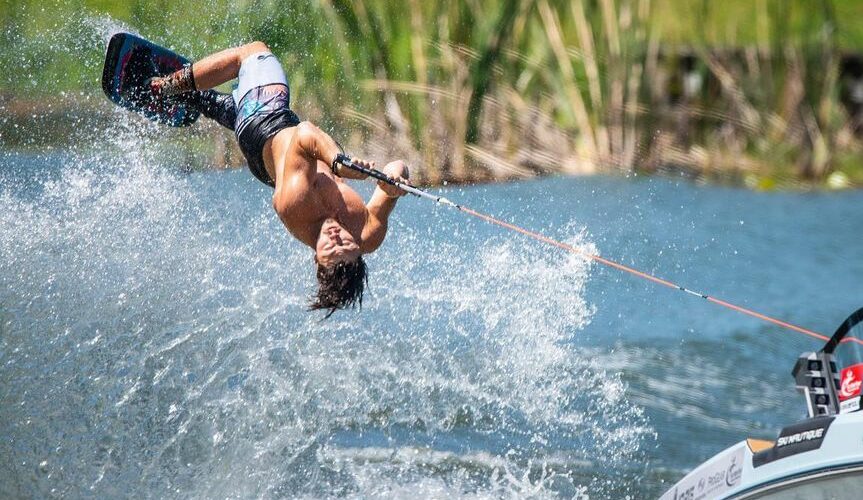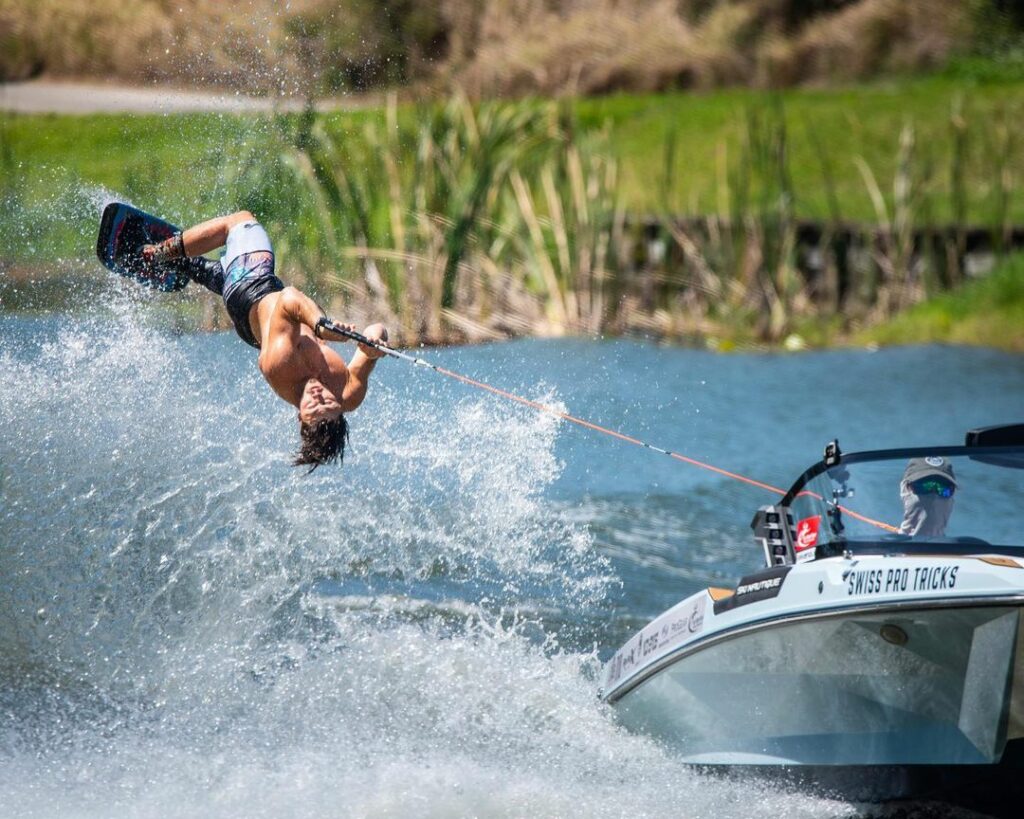Year in review: We countdown the most memorable moments of the 2024 water ski season
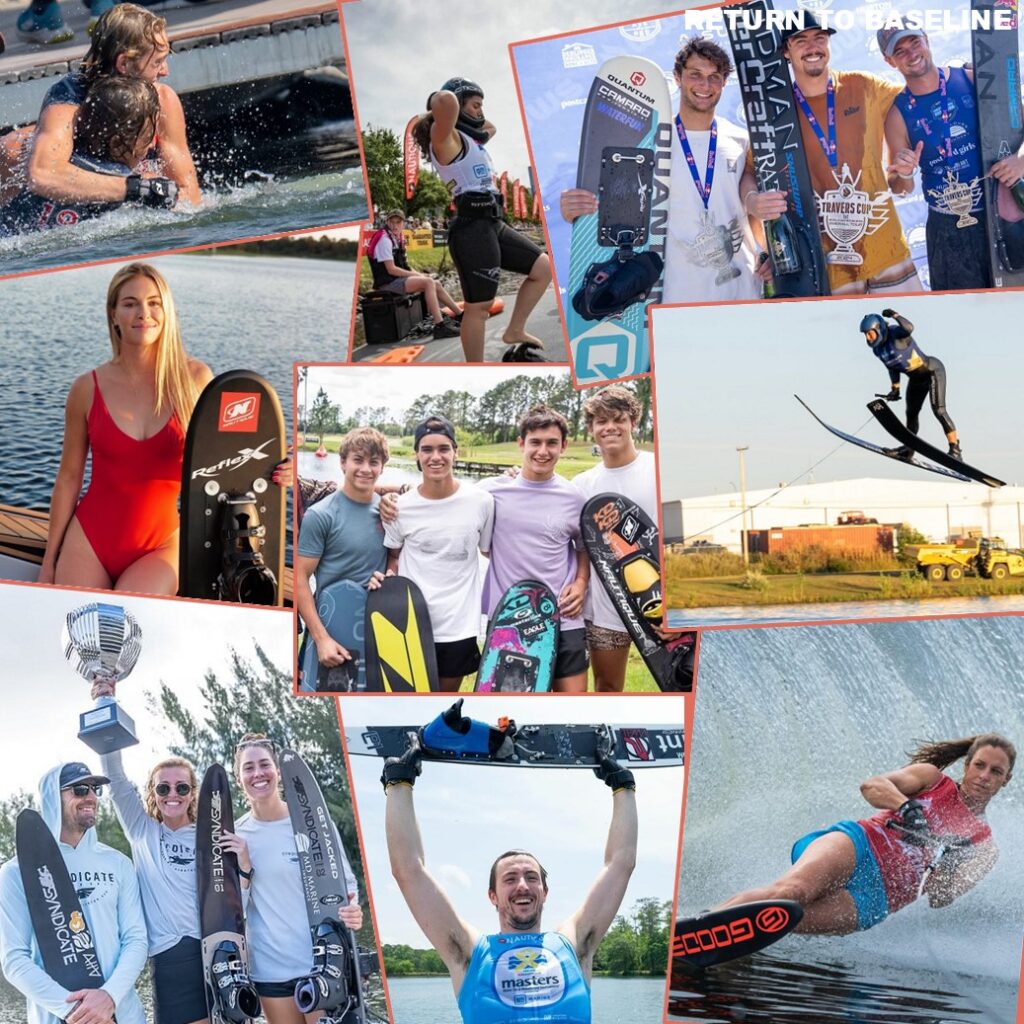
The moments that defined the 2024 water ski season – and the stories behind them.
By Jack Burden
Water skiing in 2024 was a symphony of breakthroughs, rivalries, and legends. It was a year where the boundaries of the sport were not just nudged but obliterated. From historic records tumbling to teenagers staking their claim among seasoned veterans, the season delivered a relentless procession of stories that reminded us why we love this sport. Whether it was iconic figures bowing out, future stars rising to the occasion, or tense moments that left fans speechless, the year had it all.
Throughout 2024, skiers showcased their talents across two professional tours, the Waterski Pro Tour and WWS Overall Tour, legacy events like the Moomba and U.S. Masters, and the Under-17 World Championships. At its heart, 2024 was about evolution—on the water and in the stories surrounding it. As we count down the top ten moments, we reflect on a year that redefined what’s possible in water skiing and set the stage for an even brighter future.
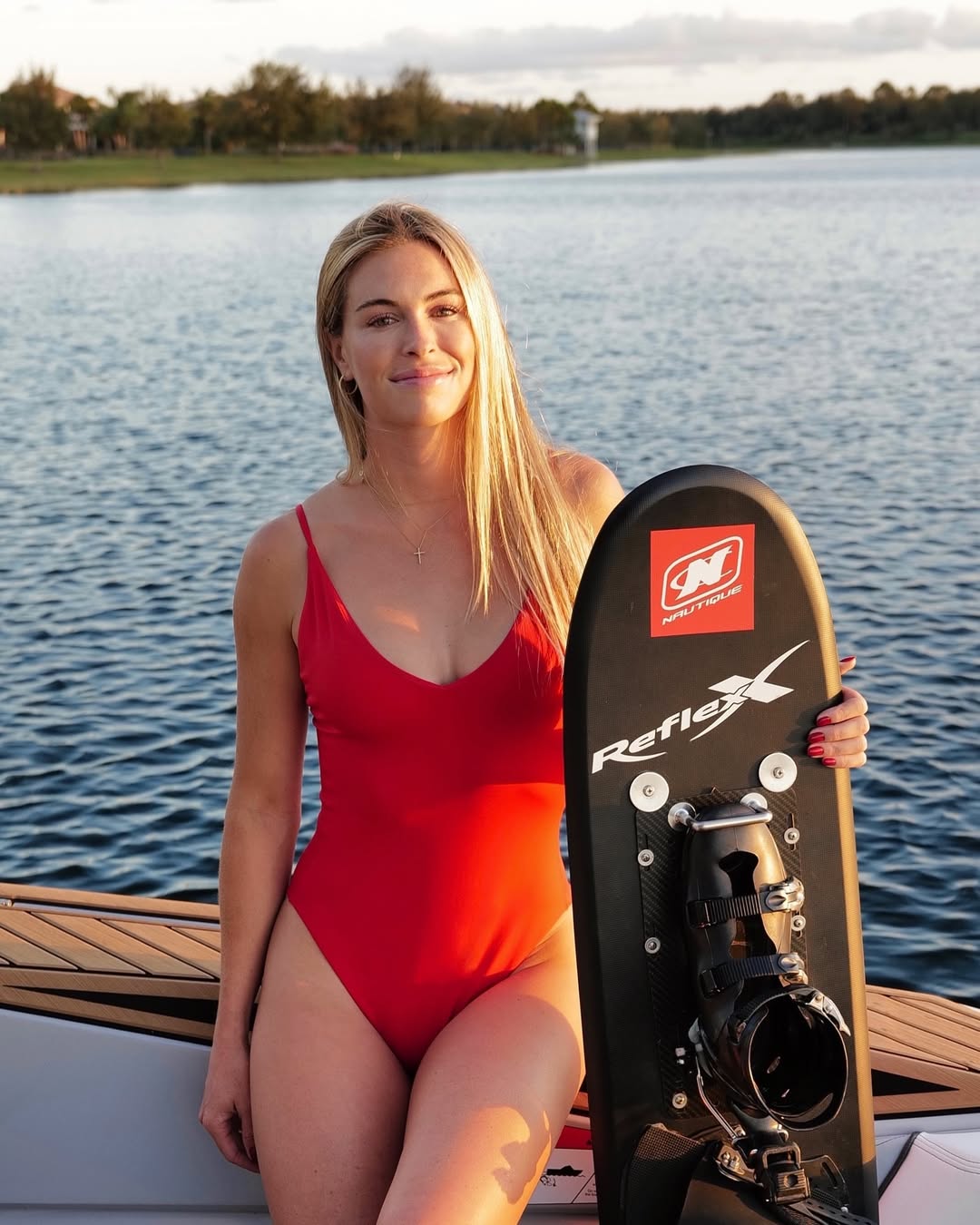
Image: @neillyross
10. Fall of Records
The women’s trick world record turned into a game of musical chairs this fall as Neilly Ross and Erika Lang traded the title in a jaw-dropping display of skill and rivalry. It all began on October 26, when Ross posted an 11,380-point run at the Okeeheelee 3-Event Record Tournament in West Palm Beach, Florida, surpassing Lang’s standing record. But just a week later, Lang fired back with an 11,450-point run at the Timber Cove Record Tournament in Texas—the highest score ever tricked by a woman.
Then, on November 9, Ross delivered a double counterpunch at the Autumn Record on Lake Ledbetter, tricking 11,430 points in both rounds and submitting two pending world records. The back-and-forth battle captivated the water ski world as the scores awaited review by the IWWF. Ultimately, Lang’s record was denied, and Ross officially claimed the world record for the first time. As of now, her latest scores remain under review.
Regardless of official ratification, the razor-thin margins and high stakes of this duel solidified Ross and Lang as two of the sport’s fiercest competitors, pushing the boundaries of what’s possible in elite trick skiing.
Perhaps most intriguing was Lang’s response. After competing at the October Okeeheelee tournament, she appears to have replicated Ross’s record-breaking sequence in a matter of days, perfecting it before her Timber Cove run.
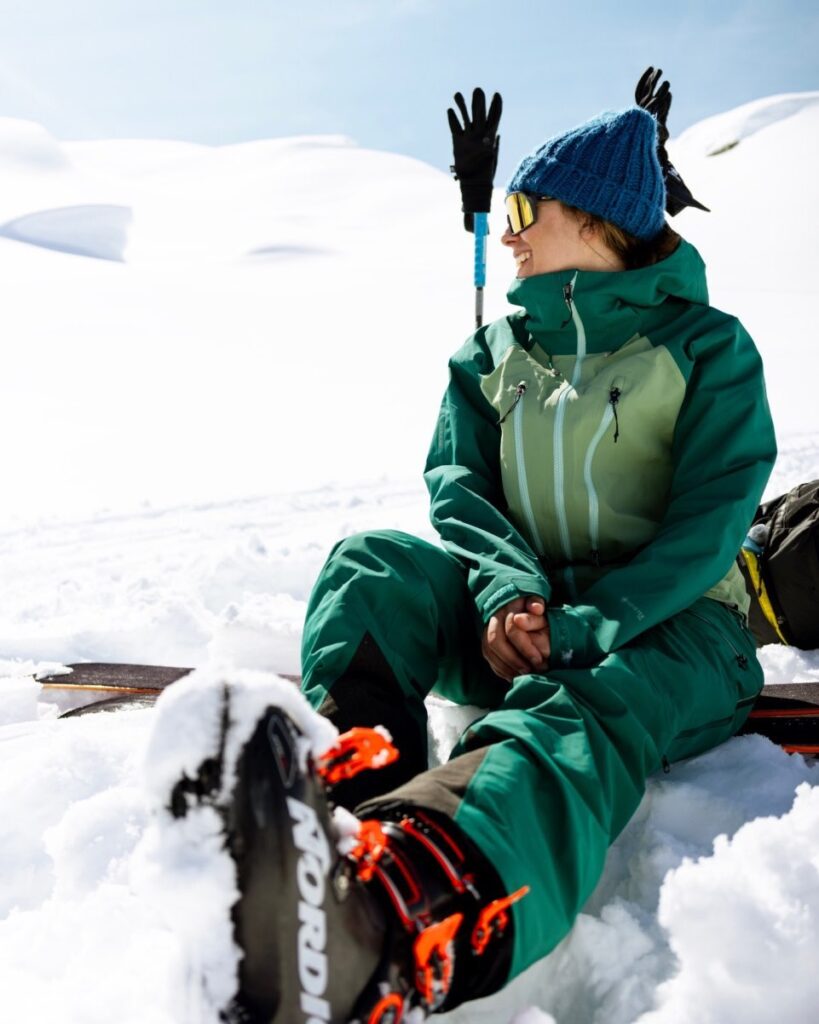
Image: @abbydells
9. Water is Just Melted Snow, Right?
The 10th anniversary of the Swiss Pro Slalom delivered a fitting start to the 2024 Waterski Pro Tour, and amidst the action, Jaimee Bull delivered one of the most astonishing performances in recent memory. Hosted at Florida’s iconic Swiss Waterski Resort, the event featured a stacked lineup of veterans and rising stars battling through two preliminary rounds and a high-stakes final—all packed into a single day. By sunset, the water had witnessed more than just skiing; it had seen history.
Heading into the women’s event, Regina Jaquess—the nine-time champion and reigning Queen of Swiss—seemed an unstoppable force. She’d never lost here, and few would bet against her claiming a 10th crown. But Jaquess fell short of McClintock-Rini’s lead of 5@10.75m (39.5′ off). Then came Bull, who had spent the winter on snow and only returned to water skiing weeks earlier. Defying expectations she ran 1@10.25m (41′ off) to claim victory, snapping Jaquess’ undefeated streak at the Swiss Pro and leaving the water ski world in awe.
Reigning men’s world champion Freddie Winter summed it up best: “It takes me a month and a half to feel like I can even stand on a slalom ski. Jaimee’s gone out and run 39 maybe in her second or third week of training. It’s exceptional. She looks outrageously good.” Bull’s understated response reflected her shock as much as her grit: “I haven’t been on the water that long, and skiing three sets in one day is a lot. [But] the rhythm was really good, and everything felt smooth.”
By year’s end, Bull’s early-season magic proved prophetic, as she claimed her fourth consecutive Waterski Pro Tour season championship. It all began with a Swiss Pro Slalom victory that was as unlikely as it was unforgettable.
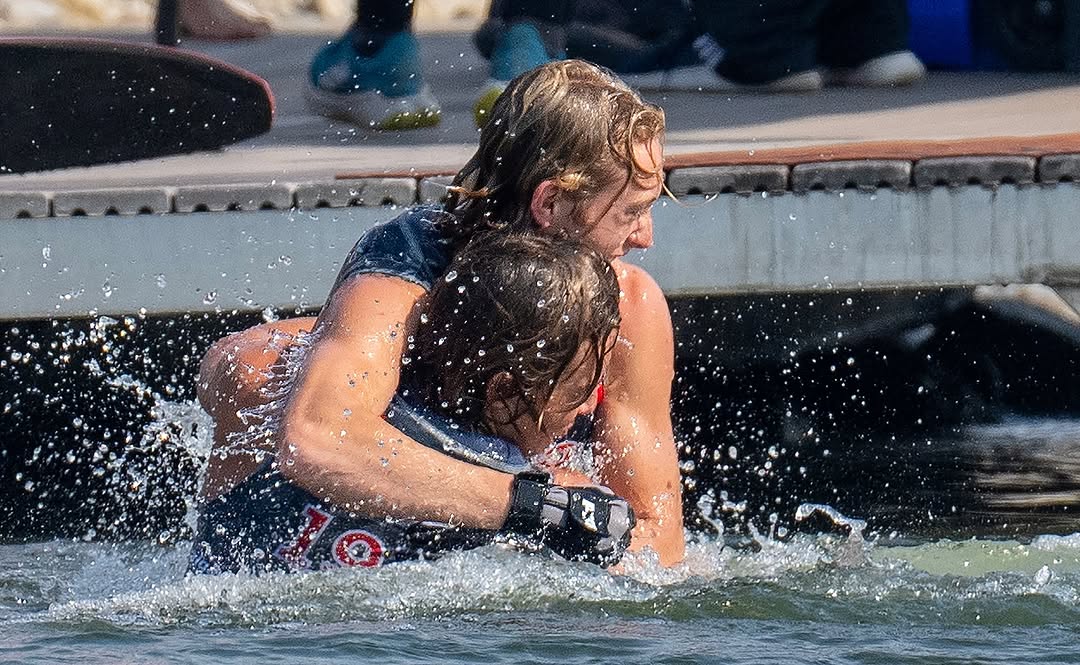
Image: @johnnyhayward_photo
8. Sibling Rivalry Hits New Heights
Sibling rivalry often adds an emotional edge to sports, but few moments have captured it quite like 2024’s Under-17 World Championships in Canada. The final showdown between Jaeden and Damien Eade, two second-generation water skiing prodigies, delivered an unforgettable spectacle of skill, resilience, and brotherly competition. The Eade brothers, top seeds heading into the event, tied for the gold medal in the slalom event, forcing a dramatic runoff.
Jaeden, the elder, had broken an almost decade-old championship record in the preliminary round with 4 buoys at 10.75 meters (39.5’ off). Damien, nursing an arm injury, was a pass back but fought his way to tie with his brother in the final at 2 buoys on the same line length. In the runoff, Jaeden showcased his composure, running a clean 11.25 meters and repeating his earlier record-setting score from the preliminary round. Damien, chasing the highest score in the history of the tournament for victory, managed 3 buoys at 10.75m – falling just short. The embrace that followed between the brothers was a picture perfect moment, a reflection of years of shared training and mutual support.
For Jaeden, the win was about strategy as much as skill. “I just had to play it safe,” he explained, describing his decision to lay up in the finals and force the runoff. Damien, meanwhile, emphasized gratitude: “Just being at Junior Worlds was an awesome experience.” Their father, Kyle Eade, a former professional jumper, summed it up: “It’s a storybook ending for us.”
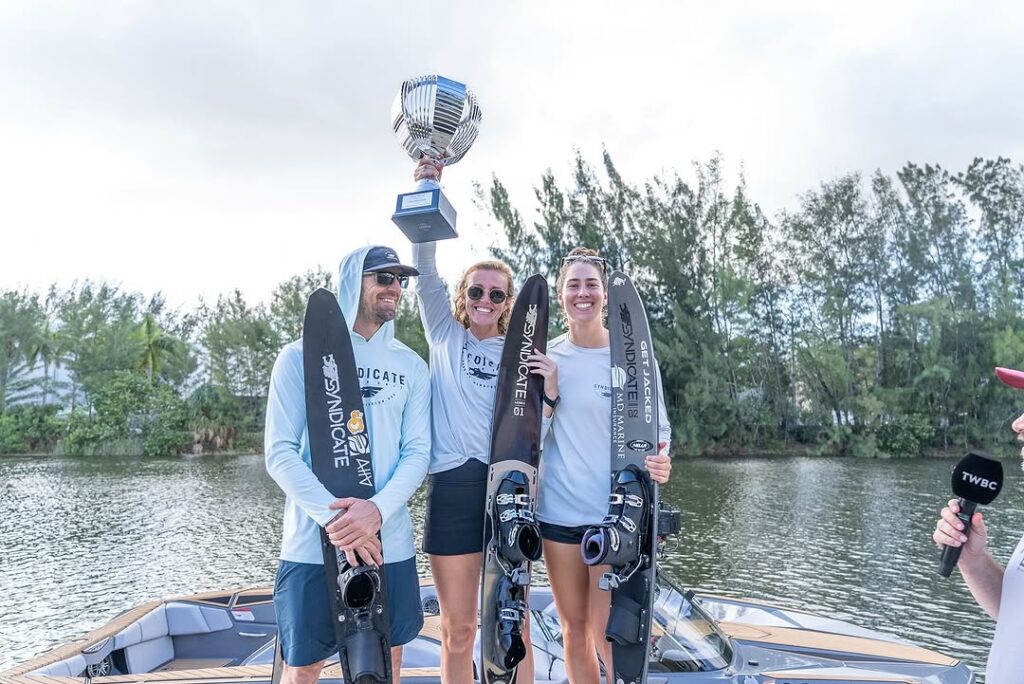
Image: @hoskis
7. Syndicate Sweeps Skiing’s Busiest Week
Four countries, four tournaments, 10 days, and $150,000 in prize money—this was no ordinary week in waterskiing. It was a whirlwind European tour that tested the endurance, skill, and grit of the world’s best slalom and trick skiers. Starting under the Moroccan sun in Marrakech and winding through the Alps, the French Riviera, and central Spain, the schedule was as relentless as the competition.
In men’s slalom one name stood tallest by the end: Will Asher. The 42-year-old veteran rolled back the years with three consecutive wins in Marrakech, Fungliss, and Monaco, cementing his place atop the 2024 Waterski Pro Tour standings. Asher not only won but did so in style, conquering the daunting 10.25m (41’ off) line length twice in the process.
Team Syndicate dominated the conversation throughout the week, claiming over 50% of slalom podiums and all seven slalom titles. Jaimee Bull continued her reign, pulling ahead on the Pro Tour leaderboard with another masterful performance. Rob Hazelwood and Allie Nicholson added individual wins to the team’s haul, while Frenchmen Sacha Descuns showcased brilliance on home waters.
Strong all season, Team Syndicate would go on to pick up their second consecutive Brand Leaderboard title on the Waterski Pro Tour. Their response was a mix of pride and gratitude: “What a year it’s been. We couldn’t be more proud of our team—on the water, in the factory, and in the back offices in Seattle. This trophy wouldn’t be possible without everyone working together and driving the team to be better every day.”
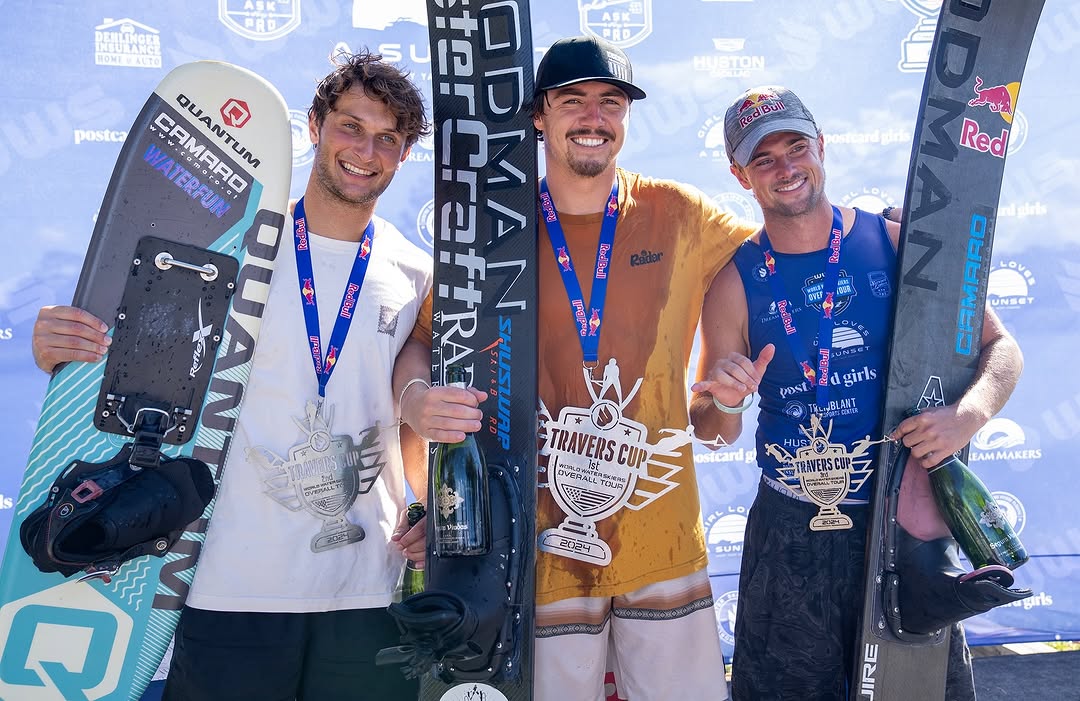
Image: @johnnyhayward_photo
6. Three Perfect Rounds
Joel Poland isn’t just rewriting the record books—he’s tearing them apart and starting anew. The 25-year-old Englishman delivered a fortnight of water skiing that bordered on perfection, beating the world overall record in three consecutive rounds. The latter two done in professional competition at the WWS Travers Cup, cementing a third consecutive season championship on the WWS Overall Tour.
This isn’t an isolated hot streak. Poland has been on a relentless tear since last year, when he ended a two-year drought to break the world overall record at the final stop of the 2023 WWS Overall Tour. That moment seemed to unlock a new level of dominance. Since then, he smashed the record again at the Malibu Open, again in the spring at Fluid, and—astoundingly—exceeded it in three consecutive rounds this September. Records aren’t supposed to fall this easily, let alone in bunches. It’s a staggering level of consistency in a sport where perfection is fleeting.
Spare a thought for his competitors, who find themselves skiing in the shadow of history. Louis Duplan-Fribourg, Dorien Llewellyn, and Martin Kolman all delivered exceptional performances at the Travers Cup—indeed, the entire podium surpassed Jaret Llewellyn’s legendary “unbreakable” record that held from 2002 to 2017. The competition was breathtaking, with highlights like a pending under-17 world record from Jake Abelson and a new French national jump record from Duplan-Fribourg. But none of it could hold a candle to Poland, who put up elite-level scores in slalom, tricks, and jump across all rounds.
“I’m pretty happy—three [overall records] in a row now,” Poland said, in his typical understated way. Look away at your peril—he’s not done yet.

Image: @tiaremirandaphotography
5. The Teen Revolution in Trick Skiing
The rise of youth in men’s trick skiing was nothing short of astonishing. Heading into the season, names like Patricio Font and Joel Poland were expected to dominate. Yet, the story quickly shifted to teenagers Matias Gonzalez, Martin Labra, and the prodigious Jake Abelson.
After Font’s early-season triumph at the Moomba Masters, skiers 18 and under claimed every remaining professional trick title. Most remarkable was Abelson, who, in just two weeks, went from never breaking 12,000 points to smashing the world record—twice. This wasn’t just incremental progress; it was seismic, with his combined improvements eclipsing nearly two decades of prior growth in the sport.
The year also marked the highest level of tricking depth ever recorded, with over half of all 12,500+ scores coming in 2024. Abelson’s inspiration came from a variety of sources: the speed and efficiency of Font’s hand pass, the boundary-pushing tricks of Joel Poland, and the blistering pace of Gonzalez and Labra’s toe tricking, to name a few. Far from occurring overnight, the sudden rise in trick scores is the product of “the collective knowledge” of generations of skiers and coaches who have laid the blueprint.
“To consistently trick over 12k, the most important thing for me was to focus on speed,” shared Gonzalez. Labra echoed the sentiment, attributing their collective success to their shared childhood rivalry. “I think we helped each other to be better… we started pushing ourselves to a better level,” he said. The next generation has arrived, and the path to 13,000 points is now firmly in sight.
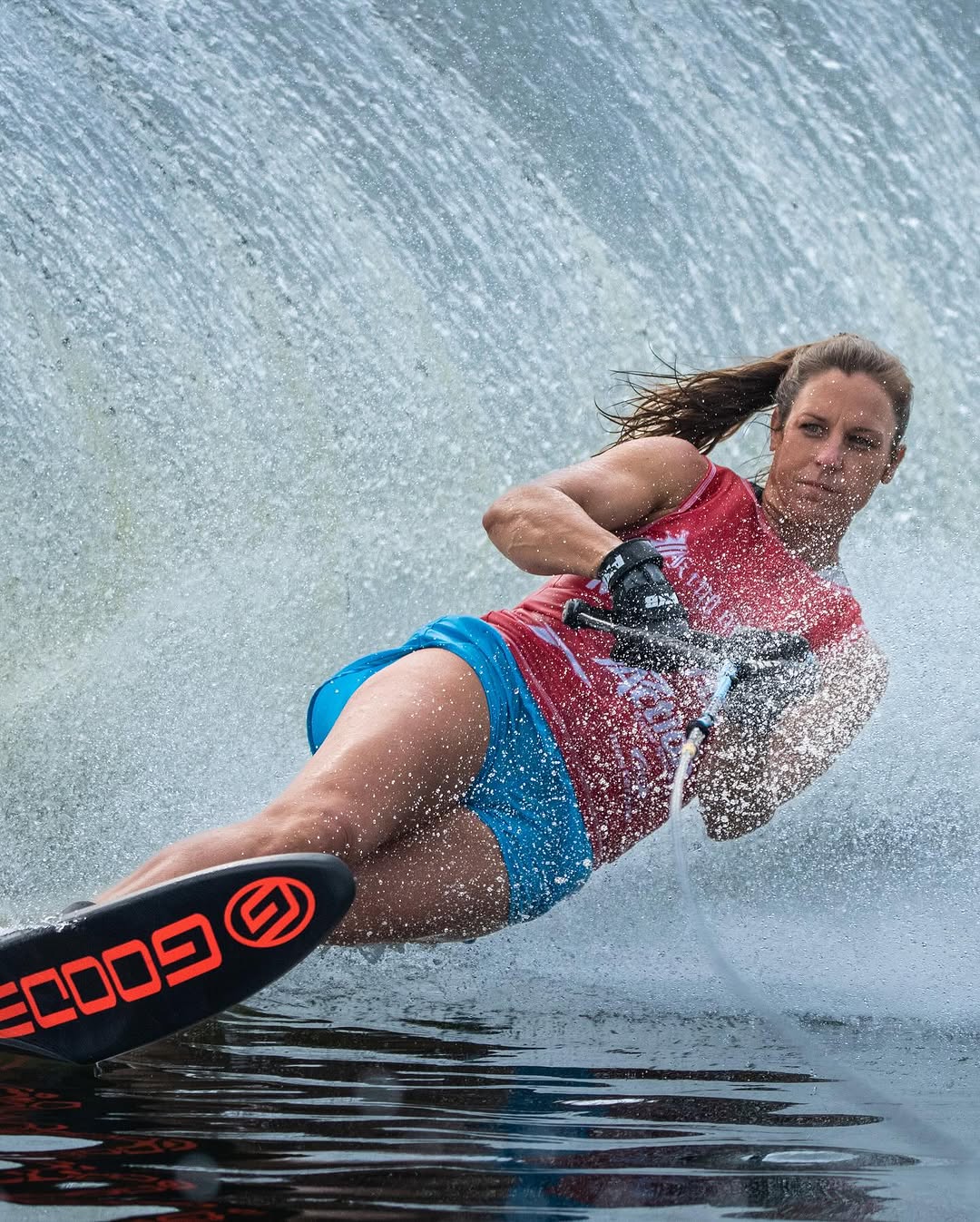
Image: @waterskiprotour
4. Queen of Darkness
The final weeks of the 2024 professional water skiing season were a relentless showcase of high-stakes tournaments across Florida, but none captured the imagination quite like the MasterCraft King of Darkness (KoD). A festival-like night event, bringing together incredible skiing and an enthusiastic crowd that harkened back to the sport’s glory days. But it wasn’t just the atmosphere that made KoD special—it was the level of competition, particularly in women’s slalom, where the bar was raised to unprecedented heights.
In a dazzling display of skill and composure, all four semifinalists—Regina Jaquess, Whitney McClintock Rini, Jaimee Bull, and Allie Nicholson—successfully navigated the notoriously demanding 10.75-meter (39.5’ off) pass in the head-to-head matchups. It wasn’t just a one-off either; the feat repeated in the finals, making KoD the first event in history to see such consistency at this level under head-to-head pressure.
The semifinals were thrillers. McClintock Rini ran 10.75 meters, likely thinking she had sealed her finals spot, only to watch Nicholson match her, forcing a 10.25m (41’ off) showdown. McClintock Rini held her nerve to edge Nicholson in a tense finish. In the other semi, it was déjà vu for Jaquess and Bull, whose rivalry delivered again. Bull pushed Jaquess to the limit, but the veteran pulled out her signature magic at 10.25 meters to secure her finals berth.
The final was a fitting climax to a night of exceptional skiing. Both Jaquess and McClintock Rini ran 10.75 meters again under the fading lights, setting up another dramatic battle at 10.25. McClintock Rini threw down a challenging score of 2 buoys, but Jaquess, in vintage form, responded with an audacious attempt at 3-buoy, complete with a spectacular cartwheel crash as she exited her ski. The crowd erupted as Jaquess claimed the title and delivered an electrifying reminder of why fan engagement matters so much.
“That was awesome,” Jaquess said, beaming as the crowd roared its approval. “it’s great to have all the fans and spectators on shore, it’s a special treat.”
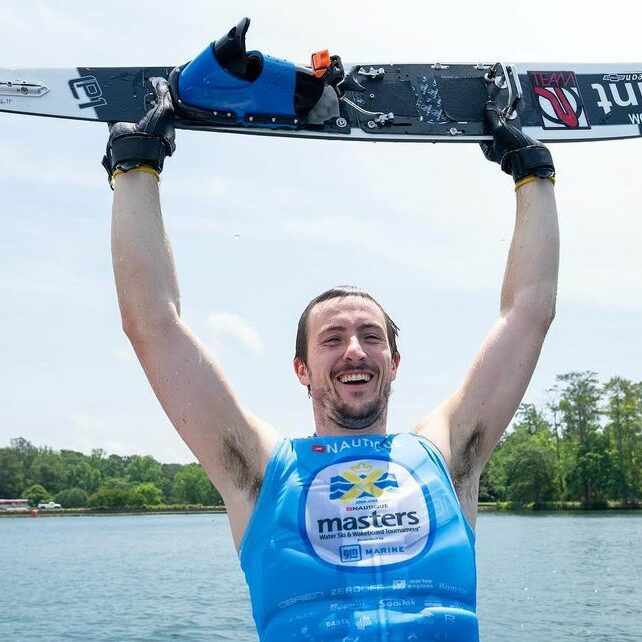
Image: @johnnyhayward_photo
3. McCormick Breaks the Glass Ceiling
If there was a theme for the 2024 men’s slalom season, it was unpredictability. For years, the pro circuit was dominated by a quartet of skiers. But this season, the door was flung open, and fresh faces stormed through. Among them, Cole McCormick’s initial breakthrough at the Masters stood tallest.
Robin Lake, a venue dripping in history and difficulty, played host to McCormick’s maiden professional victory. The tournament was a battle of attrition, with former champions like Smith and Winter faltering at the 10.75 line to miss the final. It came down to McCormick, the 28-year-old Canadian American in his first Masters final, needing to surpass Asher’s five buoys to claim the title.
What followed was raw grit. McCormick scratched his way to five and a half buoys, his ski ejecting him spectacularly into the water but sealing the win. His victory not only ended a four-year drought of new slalom champions but also set off a cascade of first-time winners, with Hazelwood, Vaughn, Mechler, Cornale, and Caruso all adding their names to the annals of the sport before the season’s end.
Reflecting on his triumph, McCormick said, “Words just can’t even describe what this means to me. To accomplish something that you dream about as a kid, to finally deliver a win… just feels unbelievable.” It was a win years in the making, but the timing felt perfect.
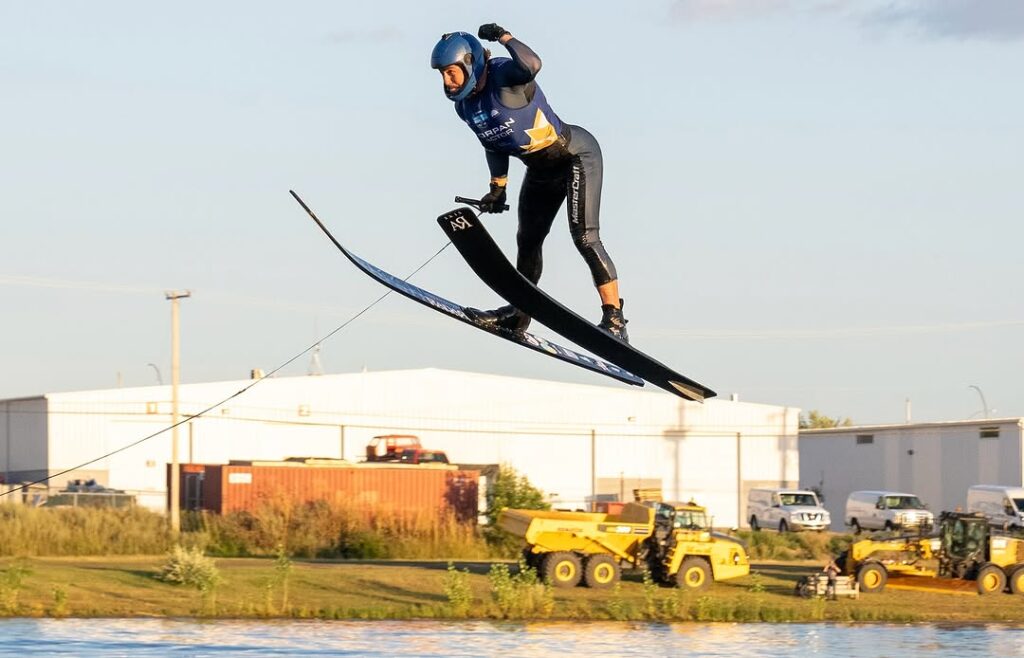
Image: @johnnyhayward_photo
2. The Jump-Off that Defined a Season
When Freddy Krueger, the GOAT of water ski jumping, and Joel Poland, the sport’s newest star, meet in a tournament final, magic happens. Saskatoon’s marquee event delivered in spades as these two titans brought the house down.
Poland, second-to-last off the dock, needed a monster jump to surpass Martin Kolman and seize the overall victory. His third and final attempt was pure adrenaline, and when the crowd’s gasp subsided, he had done just enough to edge ahead of Kolman and take the lead in the jump event in one fell swoop. Enter Krueger, who thrives on moments like these. His last jump tied Poland’s leading mark, forcing a rare jump-off.
Krueger opted to go out first after winning the toss and opened with the longest leap of the day, adding an extra foot to his regular competition best. “It’s getting challenging, we’ve got shadows on the ramp now, playing with the visuals a little bit, but this kids got talent coming out his ears,” Krueger remarked as Poland prepared for his turn.
Poland’s response was dramatic. After slipping out on his first attempt, he delivered an all-or-nothing second jump, punctuated by a mid-air fist pump. The crowd held its breath, and when the measurements were revealed, Poland had edged Krueger by 30 centimeters (tying once again in feet).
“I was maybe too confident throwing the fist,” Poland admitted afterward, “but man, that felt good.” Their neck-and-neck battle defined the season, featuring several nail-biting finishes as they traded titles, with Poland ultimately clinching his first Waterski Pro Tour championship.
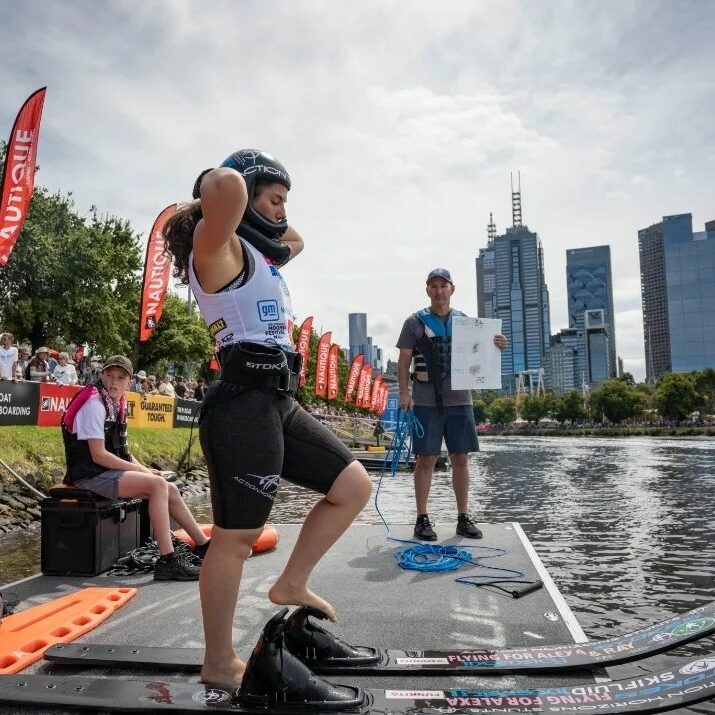
Image: @jacintacarroll
1. Rabbit Bows Out
Jacinta Carroll capped her storied career with one final, breathtaking triumph—a tenth consecutive Moomba Masters jump title, achieved just 100 days after giving birth to her daughter Amelia. It was the ultimate swan song, a farewell fitting for a legend who has redefined what’s possible in women’s jumping.
The path to her final victory was anything but smooth. With just two weeks of on-water training over the past year, Carroll returned to the ramp powered by sheer determination and a rigorously managed recovery. Her third jump sealed the title, and as she stepped back onshore, the emotions poured out. “I started my professional career here in 2011 when I won my first Moomba Masters, so it was only fitting that I come back this year for my last professional jump event,” she said, her voice quivering.
For over a decade, Carroll was an unstoppable force. She rewrote the record books with 42 consecutive elite wins, seven consecutive U.S. Masters titles, five world championships, and the magic 200 foot milestone ticked off.
As Rabbit waved goodbye to the roaring Moomba crowd, there was a collective sense of loss and gratitude. Her retirement marks the end of an era, but her contributions have undoubtedly elevated women’s water skiing to new heights, inspiring future generations of athletes.
Honorable Mentions
- The unbreakable tie between Degasperi and Caruso at the European Championships, marking T-Gas’ 11th consecutive victory.
- Winter’s season-ending dock collision at the Monaco Pro Slalom.
- Vaughn’s maiden professional victory, achieved after nearly two decades on the circuit.
- The Abelson siblings’ dominance at the Under-17 World Championships, leading Team USA to a decisive victory.
- TWBC’s rollout of the “helmet cam” at the MasterCraft Pro.
